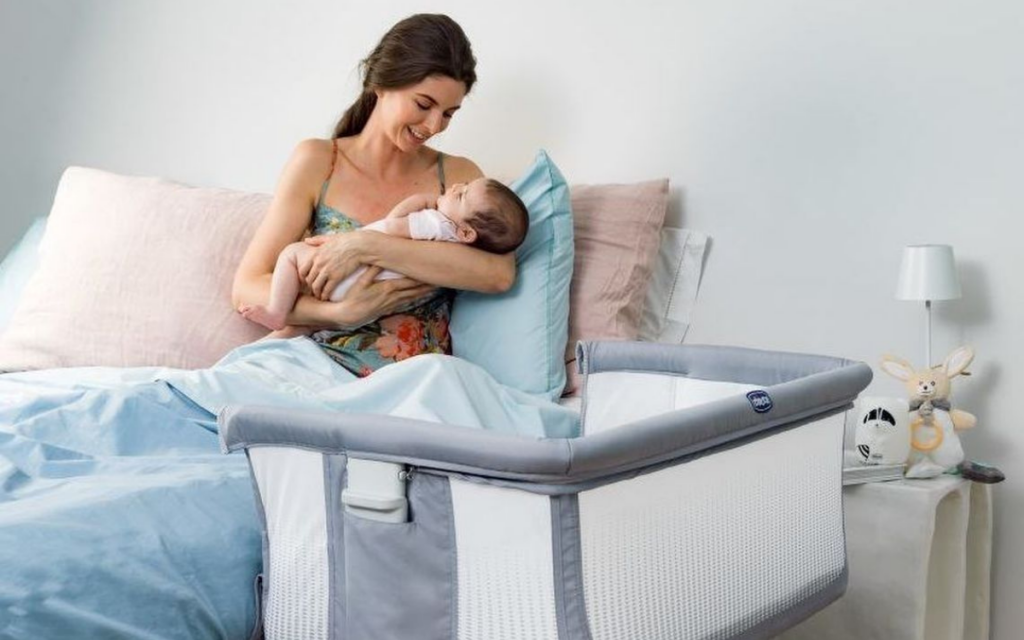Sleeping close to your baby offers a host of benefits for development.
In the first few months of life, parents want to keep their newborn baby close at all times. Overnight, this need can become more intense: parents want to feel that their child is next to them while they (at least try to!) sleep. Similarly, a newborn baby is reassured by the presence and closeness of the parent.
Co-sleeping: what is it?
The term “co-sleeping” consists of two words, sleeping and co (which means together). This term indicates the practice of baby and parent (or any other person) staying close together, even during the night, especially early in a baby’s life.
Is co-sleeping safe?
Firstly, it is essential to make an important distinction: there are two types of co-sleeping, safe and unsafe. Chicco Australia does not recommend that babies sleep in a dangerous environment.
Sleeping together can have many advantages and benefits. Still, it is crucial to respect a fundamental rule: stay close, but with everyone in their own bed. It’s OK to bring the baby into your bed for feeding and cuddles, but afterwards, they should always be put back into their own space to sleep.
For further information on safe sleep rules, raisingchildren.net.au has some great tips to reduce co-sleeping risks.
How can I co-sleep AND have my baby sleep in their own bed?
Taking the correct steps for sleeping beside your baby.
So where should your newborn sleep in the first few months of life? It is much better for a baby to sleep in their crib, which can be placed next to your bed.
Improvised or do-it-yourself solutions are not recommended. Using a crib designed for co-sleeping developed to allow baby to sleep close-by whilst staying safe, is a much more reliable option.
Some easy-to-follow tips to improve your sleep environment while co-sleeping include:
- Sleep baby on their back. Not on their tummy or side.
- Keep baby’s head and face uncovered. Tuck blankets in firmly or use a baby-safe sleeping bag.
- Ensure that the mattress is flat, firm, clean and the right size for the crib.
- Avoid bulky bedding — for example, quilts or pillows.
- Place your baby to sleep beside you (in a co-sleeper crib) and not in between you and your partner.
- Remove teething necklaces before sleep.
Sleeping Close: The benefits of co-sleeping.
Today, experts maintain that safely sleeping next to your baby is a positive thing to do and can have numerous benefits for little ones and their parents. Below are some of the advantages of co-sleeping:
- Helps baby establish a proper sleep-wake cycle;
- Strengthens the mother-child relationship;
- Calms and reassures parents and baby;
- Makes caring for baby easier;
- Facilitates more successful breastfeeding;
Helping your new baby establish a good overnight routine can take time, with a lot of trial and error. From feeding to nightlights, cribs and portacots, we’ve got you covered.
Wishing you a peaceful night’s sleep.
Team Chicco
#ParentWithMore

